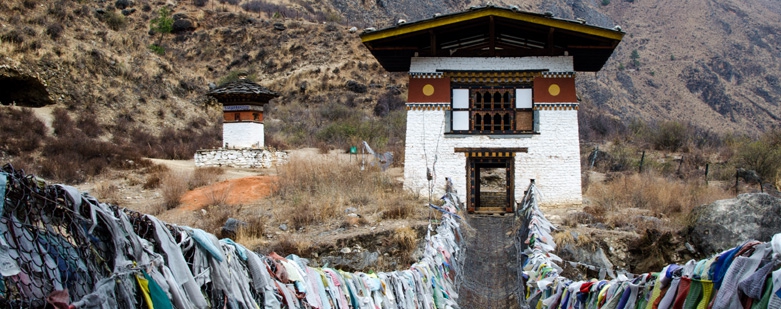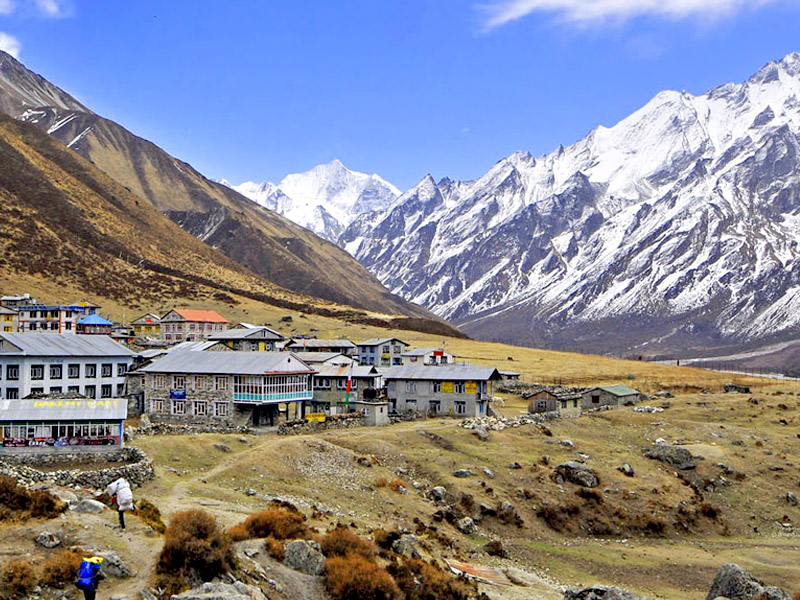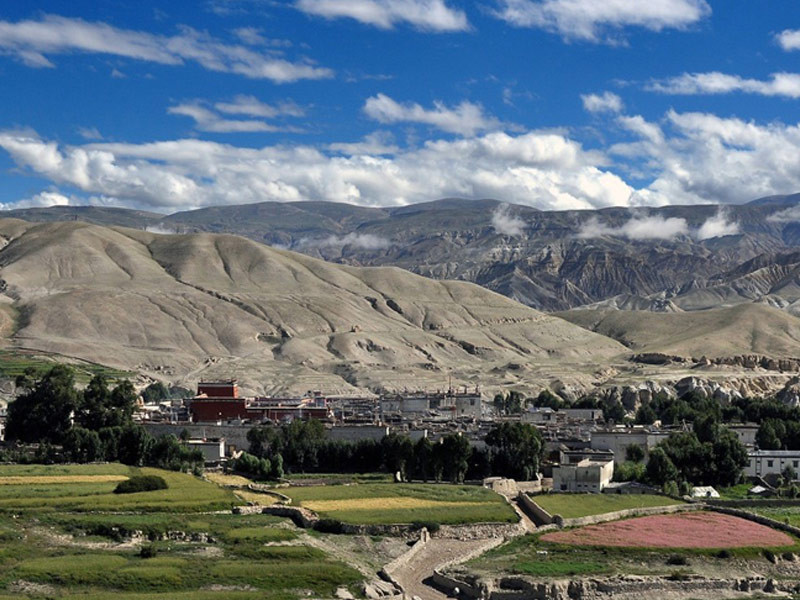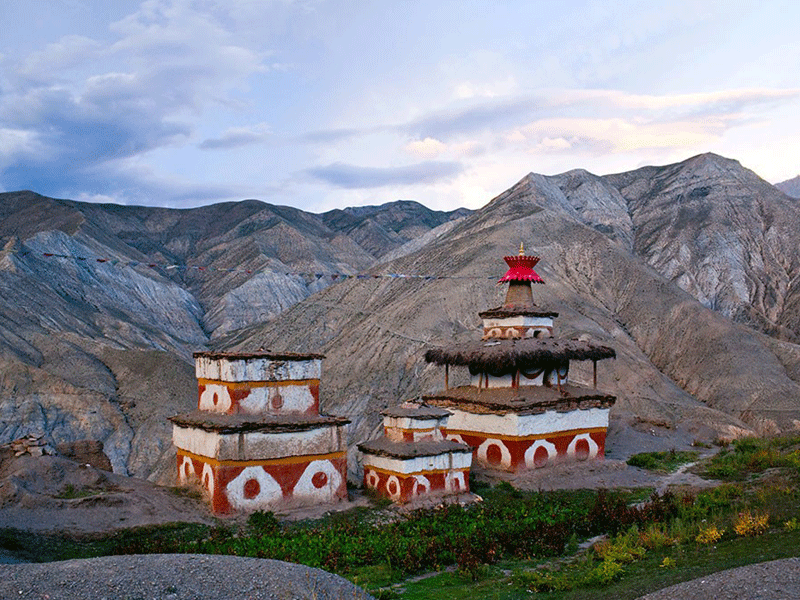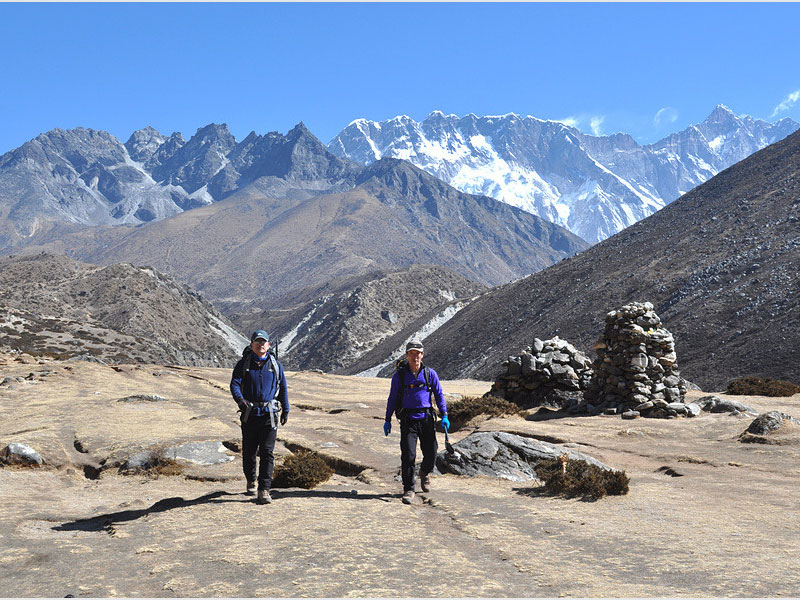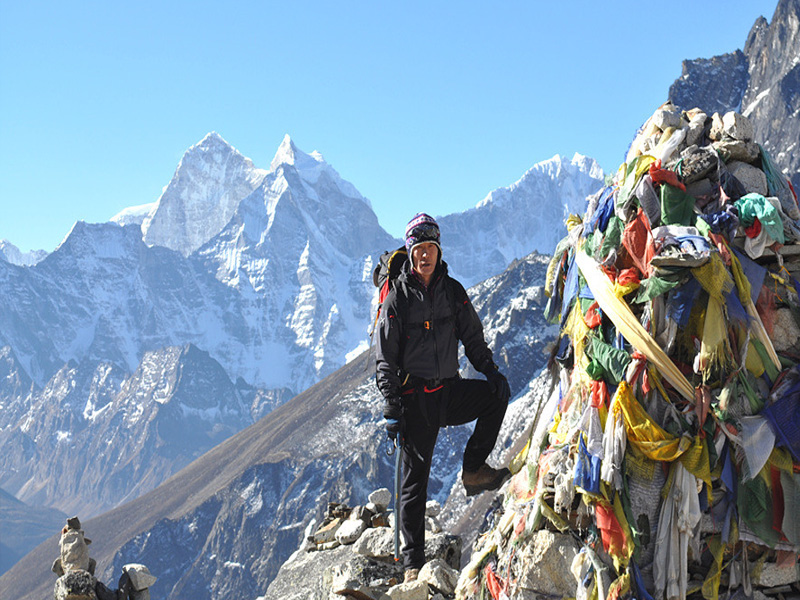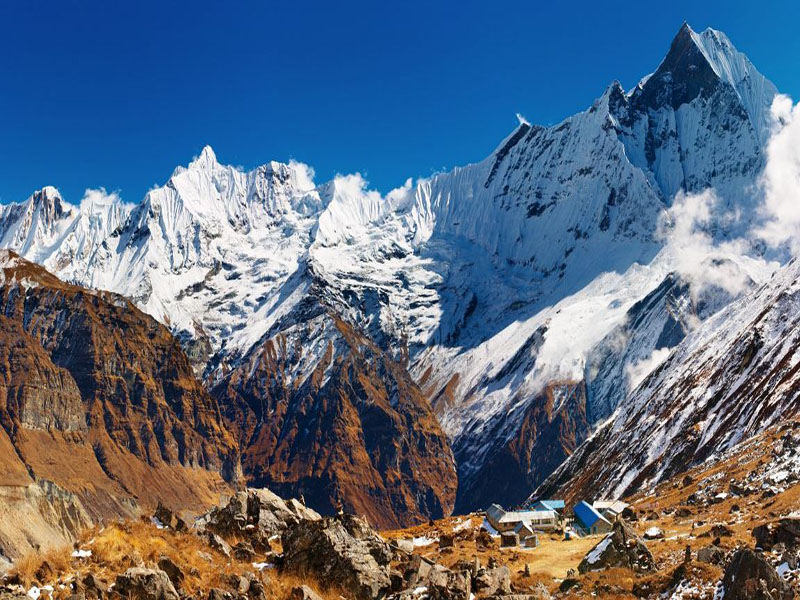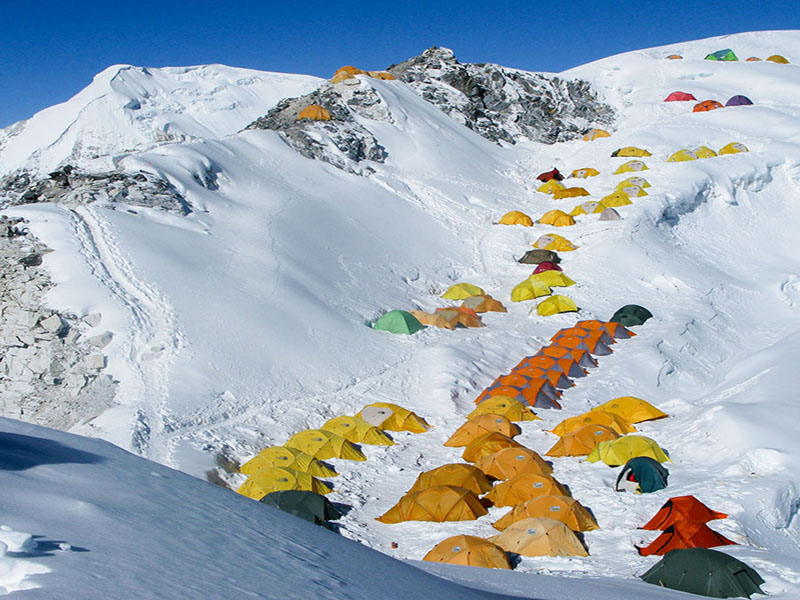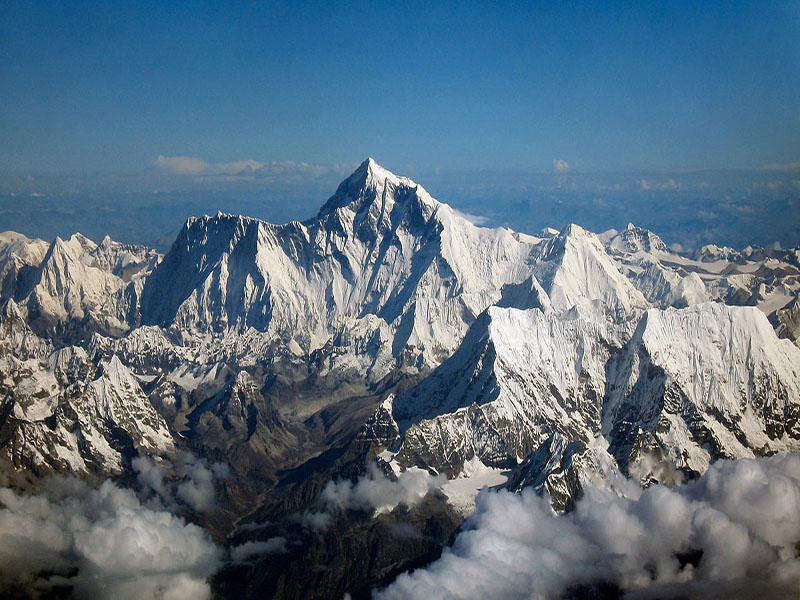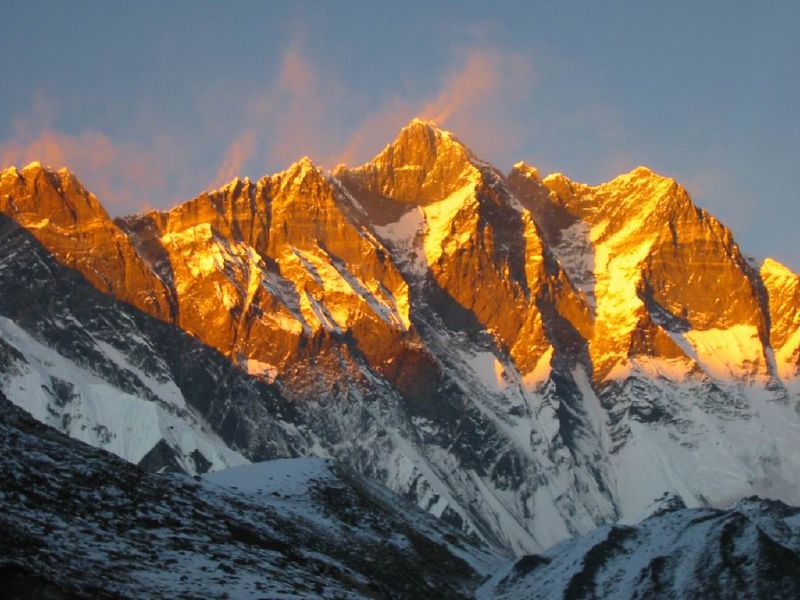6 Days 5 Nights Tour
TRIP OVERVIEW
This 6 days 5 nights Bhutan Tour is one of the popular tour packages. You will never forget this holiday tour in your life.
You will fly in Druk Air from Kathmandu to Paro airport and enjoy the once in a lifetime breathtaking Himalayan flight over the Himalayas. Visit Tachogang temple, Sightseeing in Thimpu, excursion to Punakha, sightseeing in Paro and many more to do.
Trip Detail
Trip Length: 06 Days
Trip Outline: Cultural Spiritual Experience
Season: All Year Around
Trip Level: Moderate
Accommodation: Hotel
Transportation: Jeep/Van/ Flight
DETAIL ITINERARY
Bhutan Tour Itinerar (6 Days 5 Nights Tour)
Day 01:
Fly Paro and Drive to Thimphu (L/D):Fly onboard Druk Air to Paro, Bhutan. On a clear day the panoramic views of the Himalaya are sensational, including Everest, but particularly exciting is the approach through the Bhutanese foothills and the landing, including a few steep turns to land at the tiny airstrip of Paro. In Paro you will be received by your Bhutanese guide and transferred to the capital town of Thimphu (1 hr drive).
Road from Paro to Thimphu: The distance of about 55kms from Paro town takes little less then 1 hr. with recently broadended road. Drive south following Pachu river to the river confluence at Chuzom, which is also the hub of road network going to Paro, Haa, Thimphu and Phuntsholing. From Chuzom, the road follows Wangchu River upstream as you pass through villages and suburbs to the capital, Thimphu. En-route, you can stop to view Tachogang temple and the nunnery at Sitsina.
Thimphu: (at 2300m) is Bhutan’s capital city and center of government, religion and commerce. About two hours drive east from Paro is this a unique city with unusual mixture of modern development alongside ancient traditions. Home to civil servants, expatriates and monk body, Thimphu maintains a strong national character in its architectural style. It was a wooded farming valley until 1961, when it became Bhutan’s official national capital. The massive Tashicho Dzong, about 700 years old, was carefully revamped in the 1960s by the late King Jigme Dorji Wangchuk to house the royal and main government offices. Even today, it still only has a few streets and no traffic lights with estimated population of 70,000 people.
Thimphu has many places and sights to visit, in addition to several day excursion possibilities. It has relatively more choice in terms of the accommodations.
Tashichho Dzong: This fortress serves as the office of the King, ministers and various government organizations. It also is the headquarters for central monastic body of Bhutan. Bhutan’s spiritual leader Je-Khenpo and the monks of both Thimphu and Punakha reside here during summer. It is also the venue for Thimphu Festival in the fall season.
Weekend Market of Thimphu: starts around noon on Friday and ends on Sunday afternoon. It resembles the farmers market in the west. However since there are no big super markets, Thimphu’s weekend market is the main source of fresh produce. It is an interesting place to visit, where village people jostle with well heeled Thimphu residents for best and cheapest vegetable and other food products.
Zangto Pelri Lhakhang: Located near the Weekend Market area is one of the tallest temples and was built in 1990s by a local resident. Zangdopelri refers to the celestial abode of Guru Rinpoche.
Overnight at Hotel
Day 02: Thimphu sightseeing (B/L/D)
There are a good many things to see in the capital which has a very relaxed, laid-back feel about it. Thimphu is relatively small having a population of approximately 90,000 people and the streets are wide and tree lined. You will almost certainly visit the Late King’s Memorial Chorten, the National Library, Drubthob Nunnery, Folk Heritage Museum, Takin Preserve, the handmade paper factory, the school of arts and crafts where young students learn the traditional arts and crafts (Zo Rig Chusum – the thirteen crafts), Gold and the Silver Smiths workshop, Zangtopelri Lhakhang, and the Handicraft Emporium and the local handicraft centers to see the weavers at work and also varieties of textiles, thangkha paintings, masks, jewellery etc.
Memorial Chorten: This white and tall landmark of Thimphu was built in 1974 in the memory of third King, Jigme Dorji Wangchuk, who is popularly regarded as Father of Modern Bhutan. It is a four-storey tall white building, containing statues and iconography of deities from complex tantric teachings and serves as an important place of worship for Thimphu residents, as well as from other parts of the country.
Zilukha Nunnery: is housed in Drubthob Goemba (monastery). There are about 70 nuns who live and pray everyday in the monastery. There are good views of Tashicho Dzong, Golf course and upper Thimphu.
Takin Sanctuary: Takin (Budorcas taxicolor) has been chosen as the national animal of Bhutan is based both on its uniqueness and its association with country’s history and mythology. It is said that Devine Madman, a popular saint is said to have created it with his magical power at a large congregation of devotees. It resembles a cow from back, a goat in from the front, and it continues to befuddle taxonomists, who cannot quite relate to other animal.
Day 03: Thimphu – Punakha Excursion (B/L/D)
Option-1: Rest day in Thimphu.
Option-2: In the morning we drive to Punakha (3 hrs. drive), the old winter capital.
Leaving Thimphu the road climbs via a series of zigzags over the Dochu La Pass, 10,000ft/3,048m. On a clear day panoramic views can be had of the eastern Himalaya, including Bhutan’s highest mountain, Gangkar Punsum, 24,770ft/7,550m. The road drops down through varied forest finally emerging into the highly-cultivated Punakha valley.
Visit the courtyard of Punakha Dzong and drive to Wangdue to view Wangdi Phodrang Dzong. Evening drive back to Thimphu.
Road from Thimphu to Punakha: The drive from Thimphu to Punakha or Wangdue (75kms) takes about 3 hours. The road climbs from Thimphu to Dochula pass (3,050m), and descends through ever changing forests into the semi-tropical valley of Punakha and Wangdue at about 1200m.
Dochula pass (3050m) enroute, provides spectacular snow mountains views of eastern Himalayas, including Bhutan’s highest mountain (Gangkar Punsum 7,550m), on a clear day.
Overnight at Hotel
Day 04: Thimphu – Paro (B/L/D)
Drive from Thimphu to Paro takes an hour covering 54 kms.
Visit National Museum, Kichu Lhakhang, ruinpung Dzong and Drukgyal Dzong.
National Museum of Bhutan: Established in 1967, the museum is housed inside a circular Ta Dzong, an ancient watchtower. It has fascinating collection of arts, relics, religious thangkha paintings, households stuffs, arms, handicrafts, stuffed animals and Bhutan’s famous Stamps among others (open 10-4pm – closed on Monday).
Kichu Lhakhang: Tibetan King Songtsen Gompo in the 7th century miraculously built 108 temples, along with Jorkhang in Lhasa. Kyichu is considered to be one of them and is one of the oldest temples in Bhutan.
Rinpung Dzong: was built and consecrated in 1645 by Shabdrung Nawang Namgyal on the site of five storey castle built in 16th century. Throughout the 17th and 18th centuries it served as a bastion against invasion from the north. It is regarded as one of finest Bhutanese architecture – with intricate wood work, large beams slotted into each other and held together without nails. In it houses the giant 30m X 45m Thangka (Thongdrol), commissioned in mid 18th century, displayed on the last day of Paro Tsechu festival. Nowadays, it functions as the administrative and judicial headquarter of Paro district, and residence for the 200 monks of Paro Rabdey.
Drukgyel Dzong: 14kms from Paro town, at the end of the paved road stands the ruins of Drukgyel dzong (victories fortress) built in 1644-49 to commemorate the Bhutanese victory over the Tibetan-Mongol forces. It was later ruined by fire in 1951. On a clear day, Mt. Jumolhari, Bhutan’s holy peak is seen against its backdrop.
Overnight in Paro, Hotel
Day 05: Paro Sightseeing (B/L/D)
Option 1: Haa Valley Excursion;
This morning a scenic drive of 1 & ½ hr will bring us to Chele La pass at an altitude of aprrox. 3900m/1300ft. On one side is the Paro and on the other side is Haa valley. After brief stop on the pass (as you won’t stay long because of the strong current of wind) continue driving downhill to the forbidden district of Haa (closed to tourist until 2006). Take a tour of Haa valley and visit chorten Nagpo and Karpo and Haa Dzong if permissible. Lunch at restaurant and drive back to Paro.
On your way back to Paro, If ypou feel like to stretch the legs you will stop at a place for the hike to a monastery called Dzondrakha which looks similar to famous Tiger’s Nest monastery but located at shorter hiking distance. If you are energetic – walk along the agricultural field and very easy, another half will be an uphill climb and when both versions of hikes are summed up it will take less than 1 hour to reach at the top where the monastery stands. On reaching the site of the monastery, one would enjoy the view of the fertile Paro valley below. Your guide will take you inside the main temple of the monastery.
Option 2: Hike to Takstang on Pony ride (B/L/D)
You can ride the pony up to the cafeteria for stunning view of the most well known Himalayan Taktshang monastery. While coming back it is easier to walk downhill rather than riding pony which will prove dangerous.
Taktshang – Tiger’s Nest: Tiger’s Lair or Tiger’s Nest as it often referred to for Taktshang Pelphung monastery, is one of the most venerated and famous of Bhutan’s monasteries. It is located on the face of a sheer 900m cliff above the floor of Paro valley. It is an impressive and un-miss-able sight but accessible only by walk or to ride mules/pony. If you need the riding horse, you must ask your local guide to arrange it on the previous day. From the trail head (2600m), the walk till the Cafeteria is a steep one hour uphill (about 350m ascent). From the Cafeteria (2940m) and areas around it, one can get a good close-up view of Taktshang. Savor views of the monastery over a well-deserved cup of tea and biscuits at the cafeteria.
For those who wish to proceed further from here, one must be able to walk. Usually Ponies/horses will not take people beyond this point and neither will they take you downhill. From the cafeteria, trail continues uphill for another 45 minutes to a high observation point (3140m) where there is a Chorten (stupa). From this vantage point, the lookout to the monastery is a very spectacular and seems almost close enough to touch. It is now on the other side of a deep chasm, only around 150m away as bird flies, but takes half hour or even more to reach. Continue down the flight of cliff-hanging steps on the narrow trail to a beautiful waterfall that plunges down the deep chasm and alongside is a retreat hermitage, jammed dramatically into a rock crevice. Then climb up the flight of steep steps to the monastery. At any point on this walk, you can always return if you find it too difficult. Once inside the monastery, there are several shrines or temples to see with few monks in residence. After visiting Taktshang monastery’s many shrines, most tours schedule lunch at the Cafeteria upon return. After lunch, retrace back to the road-head where you started in the morning. The retrace back is all downhill and always on foot as it is not suitable for riding pony/horse. Please note that proper walking boots is recommended for this hike. Further, if you have more time and ready for more challenging day, there are several monasteries, temples, retreat houses in the surrounding area of Taktshang. The most notable among them are Zangdopelri and Ugyen Tsemo as described seperately.
According to the legend, Guru Padmasambhava or Guru Rinpoche, who spread the Buddhism across the entire Himalayas is said to have flown here in the 8th century on the back of a Tigress, in order to subdue negative spiritual forces that were hostile to spread of Buddhism. In 853, one of his students, Pelgyi Senge mediated here in the main cave. A Stupa inside one of the temples contains his mortal remains and therefore the cave is known as ‘Pelphung’or ‘Pelgi’s cave’. Subsequently many great spiritual masters such as Milarepa, Thangthong Gyalpo, Phajo Dugom Zhigpo, Shadrung and many others passed periods here in profound meditation. In 1692, Tenzin Rabgye built a two storey temple around what little may have existed previously. This was expanded and refurbished many times over the period of time. Taktshang and several temples in the area were burnt down in 1951 by fire accident but much of them remained intact and most of the relics were saved. Soon after, it was rebuilt by entire population of Tsento village. Again in April of 1998, a major fire destroyed the main structure of the building and it’s contents. Reconstruction began in 2000 and was completed and consecrated after extensive efforts and financial support of Governments as well as donors.
Beyond Takstang Description: Takstang (Tiger’s Lair) – or Taktsang Pelphung is one of the most venerated and famous of Bhutan’s monasteries. It is located on the face of a sheer 1000m cliff above Paro valley. It is an impressive sight but accessible only by trek or on pony.
The walk to the Tea house is a steep one hour uphill (about 350m ascent). From the tea house or Cafeteria (2940m), one can get a close-up view of Takstang and most actually return back from here. After tea, snacks and rest, we will trek further uphill to a high observation point (3140m), where there is a Chorten (stupa). Continue down the flight of cliff-hanging steps on the narrow trail to a beautiful waterfall that plunges down the chasm and alongside is a retreat hermitage.
Legend has it that Guru Padmasambhava, the great Buddhist master of Oddiyana (present day in Pakistan), who spread the Buddhism across the entire Himalayas is said to have flown here in 8th century on the back of a Tigress, to subdue negative spiritual forces that were hostile to spread of Buddhism. In 853, one of his students Pelgyi Senge mediated here in the main cave. A Stupa at the main cave contains Pelgyi’s mortal remains and therefore the cave is therefore known as Pelphung or Pelgyi’s cave. Subsequently many great spiritual masters passed periods here in profound meditation. In 1692, Tenzin Rabgye built a two storey temple here, which over the period of time was expanded and refurbished. In April 1998, tragically, two of the three temples were completely burnt by fire. It has now been restored to its original splendor. After returning from the visit to monastery, we will hike further uphill from the observatory point (described earlier) to Zangdopelri temple (3250m). From here, we can actually look down on the temple, with air distance of not more than 500 meters, providing a unique view. Then if you are can, we can trek for another ½ hour further up to Ugyen Tsemo temple with great view of the valley. Depending on the trail conditions, after Ugyen Tshemo, you can walk back using different route which joins at the end. Return to Paro.
Drukgyel Dzong: Drukgyal Dzong ruins is located 14kms north of Paro town, near the end of the paved road. Drukgyal Dzong (victories fortress) was built around 1644-49 to commemorate the Bhutanese victory over the Tibetan-Mongol forces. It was later burnt in fire accident in 1951. On a clear day, Mt. Jumolhari, Bhutan’s holy peak is seen against its backdrop.
Overnight in Paro, Hotel
Day 06: Departure Transfer (B)
After breakfast, drive to Paro International airport for onward destination.
TRIP INCLUDES
Services Includes:
– Transportation by private car or hiace as per the group size
– All necessary travel permit
– English speaking bhutanise guide.
– Accommodation on twin sharing room basis
– Sightseeing and monastery entrance fees as per our itinerary.
– Meal plan:- fullboard basis (b/l/d)
TRIP EXCLUDES
Services Excludes:
– Nepal re entry visa fee
– Client and travel insurance
– Personal expenses such as a drink, guide tips & etc

